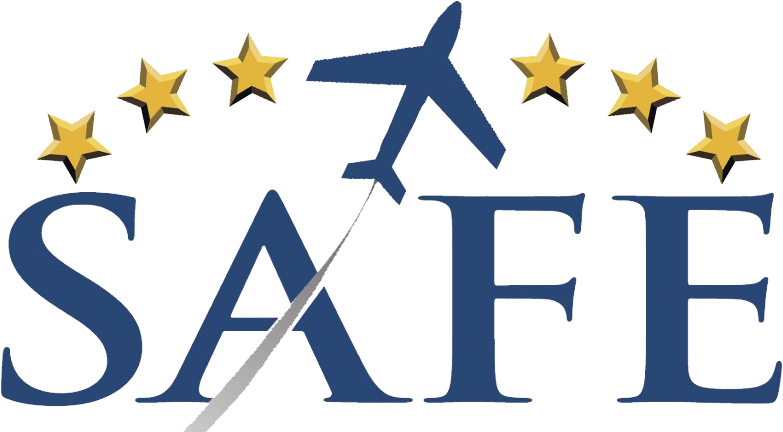Master CFI Parvez Dara, MD FACP, ATP, MCFI
As humans we depend on energy. Our energy is created in little biological machinery present in every cell, called mitochondria. These tiny powerhouses generate phosphates from converting (Adenosine Triphosphate or ATP) to Adenosine Diphosphate or ADP). Phosphate groups are needed to move cells within organs to do their jobs, e.g. muscles to contract (locomotion) hearts to pump (heart beat), kidneys to filter (filter blood), livers to digest and brains to process information. Absent phosphate and we are looking at an abyss. Oxygen, the quintessence of all elements breathes life into living creatures. Without it there is no water, nor breathable air, nor the lusty energy that makes us want to fly.
The breathable air contains 20.946% Oxygen. Humans exchange carbon dioxide for oxygen to replenish the stores of renewable energy for every one of the trillion cells that make us. This energy is in the form of Adenosine Triphosphate (ATP). ATP releases a phosphate group that acts as an energy bar for the cell to chew on so that it can accomplish its functions. These functions include manufacturing proteins, hormones, keeping the integrity of the cell wall etc. From our aviation point of view the function that cannot be clouded is the brain activity. The brain weighs about 3 pounds and consumes 25% of the oxygen supply. The brain’s hefty consumption is a testimony to its integrated and creative functions. 100% of the brain is at work 100% of the time and it needs its constant and uninterrupted energy supply.

The rarified air, for this purpose over 5000 feet at night (due to effect on the eyes) and over 8000 feet during the day, at altitude has reduced content of oxygen, which causes our brains, first to compensate by increasing blood pressure, then the respiration and heart rate to maintain the steady oxygen supply.
When oxygen levels lower further, portions of the brain function capitulate, akin to losing the alternator, one reduces energy load by keeping only the most important instruments on the panel active so as not to drain the battery. So flying in un-pressurized aircraft without oxygen, your cognitive skills diminish. The additional harm at the rarified air is the loss of moisture in the air, which makes us breathe our moisture and not breathe any in, thus leading to dehydration. Your communication and math skills suffer as do interpretative skills. Missing calls, airway intersections or flying into adverse conditions becomes possible. To unscramble the brain a little oxygen rich air is mandatory. A “Chamber Ride” at an aviation facility confirms this. Remember an intensely low oxygen level for a short time or a low-level prolonged oxygen restriction can have similar short term and long term consequences on cellular behavior. If you fly above 5000 feet at night or above 8000 feet during the day use oxygen. It is good for the cerebral soul.
Think about these problems reading this while seated in your armchair, on the ground rather than trying to decipher this information in the air:
- Mathematics Skill deterioration
- Cognitive Skill deterioration
- Instant Recall diminished (Frequency recall)
- Remote Recall diminished (experiential references)
- Decision Making Skills deteriorate (Time, distance and fuel consumption)
- Risk Assessment Impaired (eg. Go, No go decision into weather)
- Physical functional Impairment (muscle weakness)
- Lethargy/Fatigue.
The most common reaction to hypoxia is a feeling of euphoria. This is especially dangerous because an affected pilot will not usually feel “sick” or disabled but more typically feel “high” (feeling real good). Given this reaction, there is no incentive to discontinue a flight or exercise an alternate course of action. Pilots suffering from hypoxia feel like aviation gods! Only a trained vigilance from the presence of cues like altitude and duration can arm a pilot to be on guard for the onset of hypoxia; insidious and stealthy.
Training in a altitude chamber or oxygen deprivation class is helpful to bring this point home clearly.
The common physiological sign of hypoxia is cyanosis or blue color in the extremities, most noticably in your fingernail beds. Before the easy (and very reasonably priced) oximiters were available pilots checked their nails for blue color. I highly recommend an oximeter for anyone flying regularly at altitudes above 10,000 feet for any length of time. I also suggest that at altitude, one should take deep breaths to use the entire lung capacity to oxygenate the blood, since we have a tendency to shallow breathe in a cockpit.
Having supplemental oxygen readily available is also an excellent safety precaution. Safe flying always requires current training, vigilance and an attitude of caution in the presence of known threats (in this case high altitude).
Please Join SAFE and support our mission of enabling aviation excellence in pilots and educators. The amazing member benefits alone make this important commitment painless and fun. See you at the airport.
